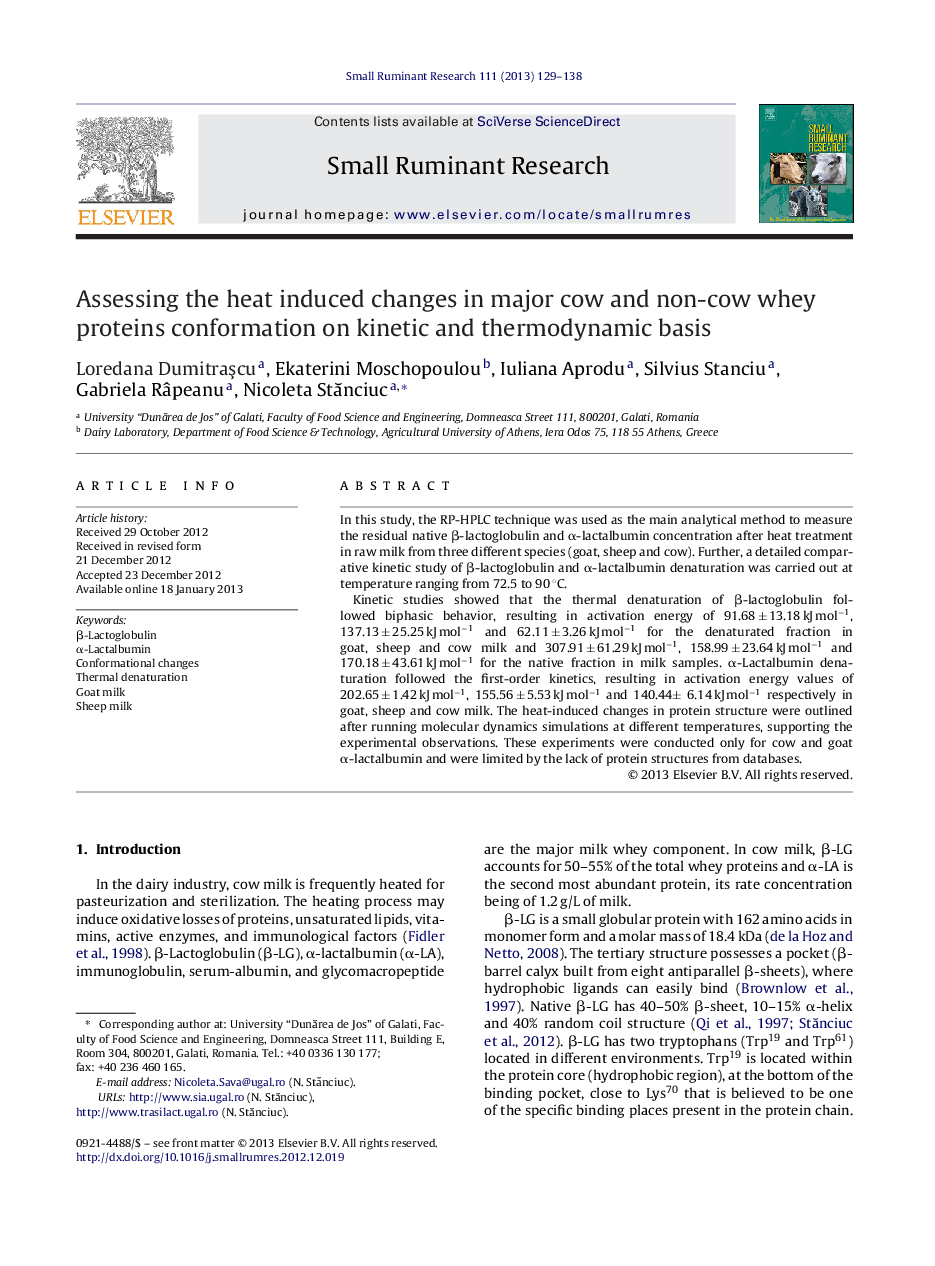| Article ID | Journal | Published Year | Pages | File Type |
|---|---|---|---|---|
| 5795873 | Small Ruminant Research | 2013 | 10 Pages |
In this study, the RP-HPLC technique was used as the main analytical method to measure the residual native β-lactoglobulin and α-lactalbumin concentration after heat treatment in raw milk from three different species (goat, sheep and cow). Further, a detailed comparative kinetic study of β-lactoglobulin and α-lactalbumin denaturation was carried out at temperature ranging from 72.5 to 90 °C.Kinetic studies showed that the thermal denaturation of β-lactoglobulin followed biphasic behavior, resulting in activation energy of 91.68 ± 13.18 kJ molâ1, 137.13 ± 25.25 kJ molâ1 and 62.11 ± 3.26 kJ molâ1 for the denaturated fraction in goat, sheep and cow milk and 307.91 ± 61.29 kJ molâ1, 158.99 ± 23.64 kJ molâ1 and 170.18 ± 43.61 kJ molâ1 for the native fraction in milk samples. α-Lactalbumin denaturation followed the first-order kinetics, resulting in activation energy values of 202.65 ± 1.42 kJ molâ1, 155.56 ± 5.53 kJ molâ1 and 140.44± 6.14 kJ molâ1 respectively in goat, sheep and cow milk. The heat-induced changes in protein structure were outlined after running molecular dynamics simulations at different temperatures, supporting the experimental observations. These experiments were conducted only for cow and goat α-lactalbumin and were limited by the lack of protein structures from databases.
